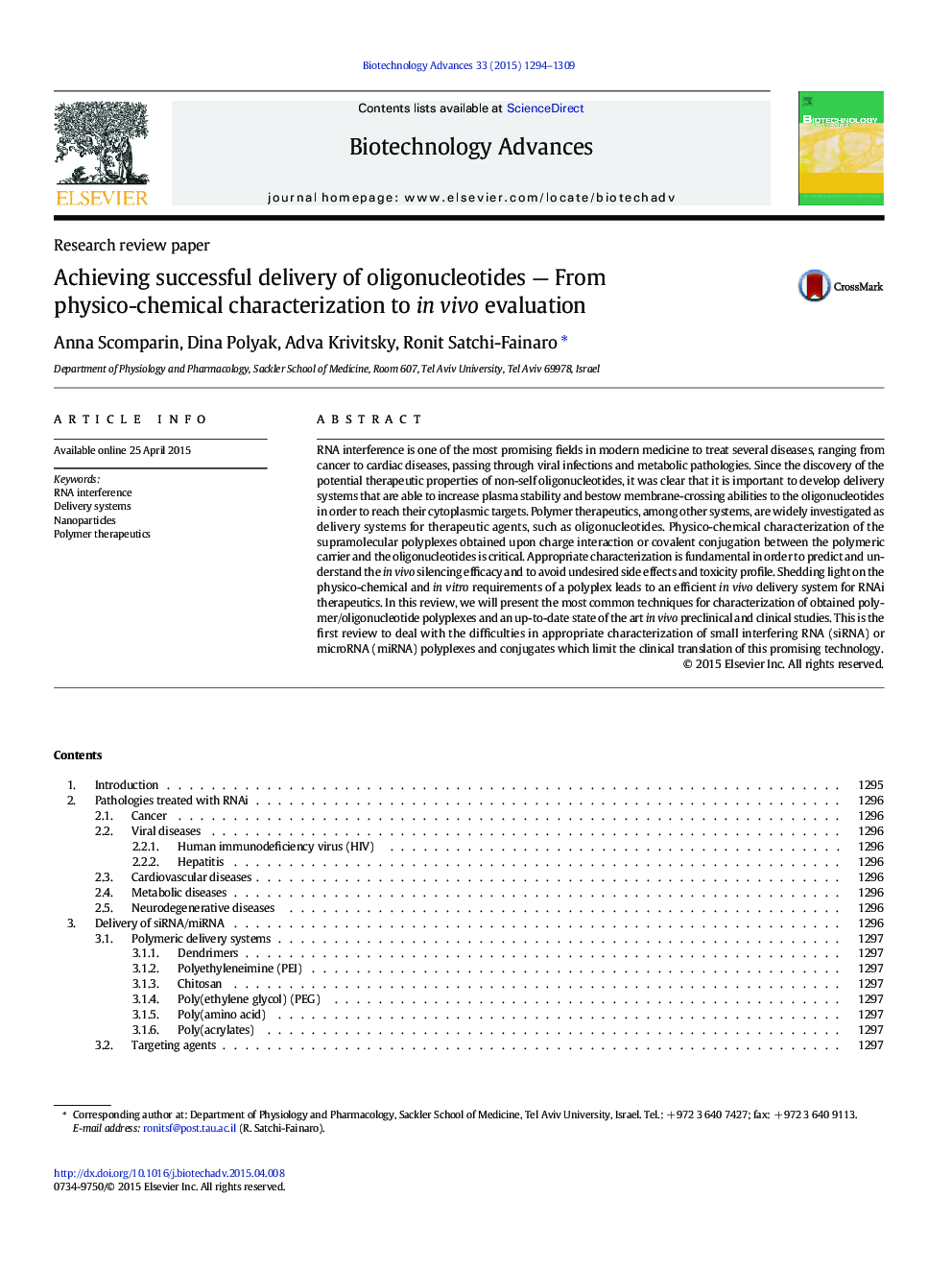| Article ID | Journal | Published Year | Pages | File Type |
|---|---|---|---|---|
| 14224 | Biotechnology Advances | 2015 | 16 Pages |
RNA interference is one of the most promising fields in modern medicine to treat several diseases, ranging from cancer to cardiac diseases, passing through viral infections and metabolic pathologies. Since the discovery of the potential therapeutic properties of non-self oligonucleotides, it was clear that it is important to develop delivery systems that are able to increase plasma stability and bestow membrane-crossing abilities to the oligonucleotides in order to reach their cytoplasmic targets. Polymer therapeutics, among other systems, are widely investigated as delivery systems for therapeutic agents, such as oligonucleotides. Physico-chemical characterization of the supramolecular polyplexes obtained upon charge interaction or covalent conjugation between the polymeric carrier and the oligonucleotides is critical. Appropriate characterization is fundamental in order to predict and understand the in vivo silencing efficacy and to avoid undesired side effects and toxicity profile. Shedding light on the physico-chemical and in vitro requirements of a polyplex leads to an efficient in vivo delivery system for RNAi therapeutics. In this review, we will present the most common techniques for characterization of obtained polymer/oligonucleotide polyplexes and an up-to-date state of the art in vivo preclinical and clinical studies. This is the first review to deal with the difficulties in appropriate characterization of small interfering RNA (siRNA) or microRNA (miRNA) polyplexes and conjugates which limit the clinical translation of this promising technology.
